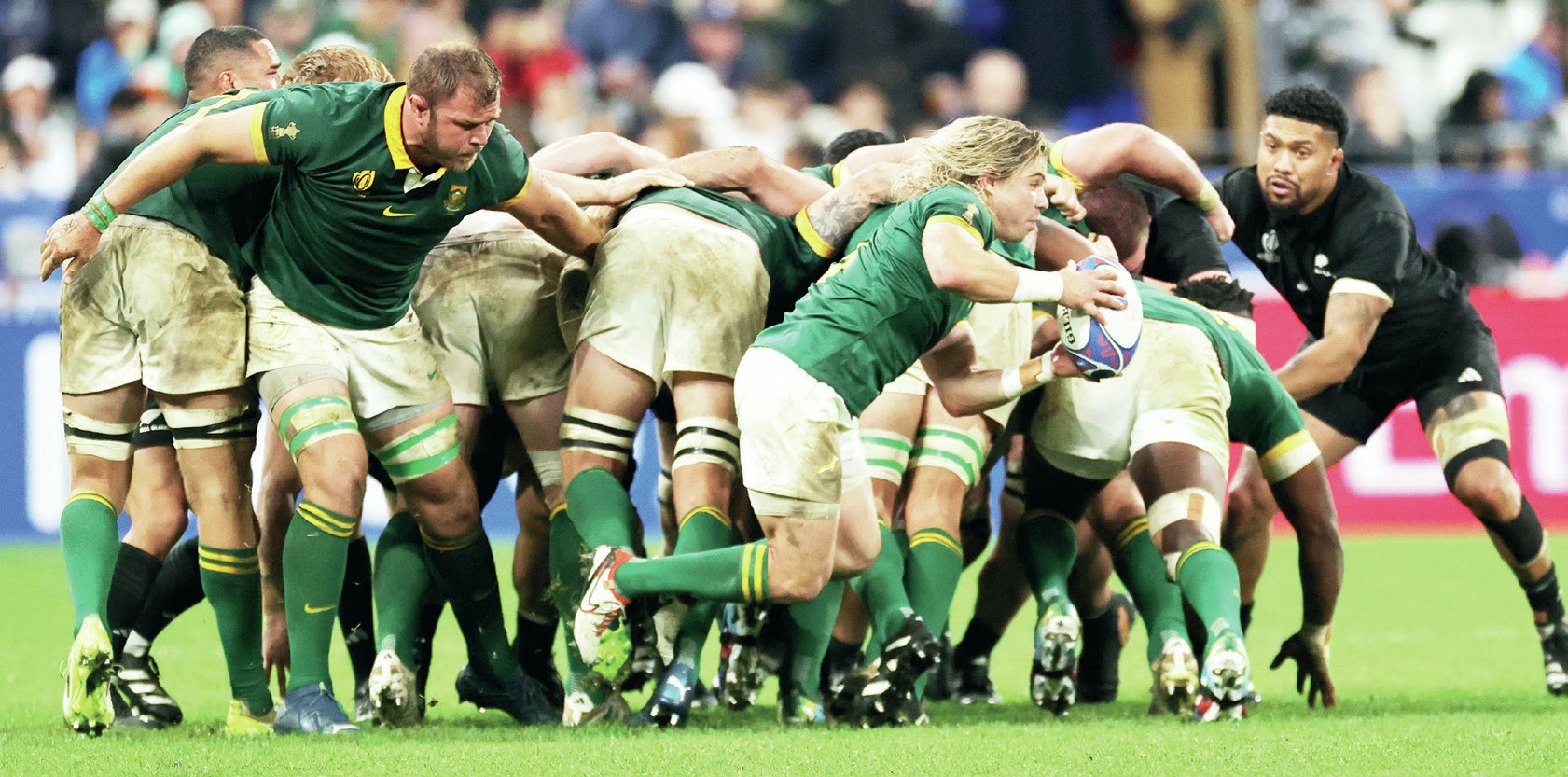Modernise the scrum, don’t allow it to die

IF WE take the Book of Ecclesiastes as our guide – ancient though it may be, it makes far more sense than anything handed down to us recently by World Rugby, the non-governing governing body – the scrum has little to fear from current attempts to tweak it out of existence. “What has been done will be done again,” says the relevant verse. “There is nothing new under the sun.”
In other words, the lawmaking class has been going after the scrum for as long as the scrum has existed. And guess what? The set-piece is still with us, to the extent that South Africa, true masters of the art, have won the last two world titles on the back of it.
It is the best part of 90 years since the Springboks, closing in on their one and only series victory over the All Blacks on New Zealand soil, received an eve-of-final Test telegram from back home containing a three-word command in Afrikaans that required no translation for the English-speaking members of the team: “Skrum, skrum, skrum”. They duly skrummed their way into history in Auckland, and their successors have been skrumming opponents into oblivion ever since.
Even so, those of us who have followed the sport for decades – spent many a long hour studying its nuances, intricacies and technicalities, and been handsomely rewarded for our efforts – might be forgiven for wondering if there is something deeper and more sinister going on these days. It is not just that the custodians and implementers of rugby's lawbook have made it seem as if each set-piece takes a minimum of 90 years to complete.
There also appears to be a move in high office, coordinated and determined, to inflict a slow death on specialist tight-forward play in all its facets.
Back in the day, there were great lineout forwards as well as celebrated scrum-halves and goal-kickers: supporters knew who they were and opponents feared them like hell. Tiny White and Gary Whetton, Steve Cutler and Bob Norster and Benoit Dauga – all of them locks who played before lifting was legalised in the mid- 1990s and drew purely on individual skill, cunning and timing for their productivity.
This is no longer the case. The professional era has produced one or two of its own maestros in this crucial theatre of the union code – for instance, the Basque back rower Imanol Harinordoquy would have been a serious operator at any time in the last century – but when a 6ft 3ins tackle dog like Peter O'Mahony is garlanded as the finest lineout exponent around… well, you get the point.
Something similar can be said of the rolling midfield maul, as perfected by the All Blacks of the late 1980s, one of the finest outfits any of us ever saw. Sadly, it has withered on the vine as rugby has abandoned its fundamental tenet of rewarding the side going forward. Its modern-day equivalent? The miserably one-dimensional mass drive from five metres, invariably following a penalty punt to touch: a cowpat-caked combine harvester instead of a jet-fuelled Ferrari.
And now they're coming for the scrums once again, as Paul Rees outlined so comprehensively in last week's paper. A majority of Premiership coaches are wary of marginalising the set-piece, but down there in the Antipodes, the mood is very different – particularly in Australia, where the 13-man code has long been the dominant force in the battle for spectators' hearts and minds. Judging by the comments of some movers and shakers in Wallaby land, they won't be happy until set-pieces are rendered irrelevant and union becomes league with two extra players.
Those of us who would prefer not to see Premiership sides fielding eight flankers in the pack, another two in midfield and staging the entire tournament in Castleford must surely throw our weight behind efforts to modernise the scrum without stripping it of its meaning. If we don't, the species known as homo proposaurus will be of interest to rugby anthropologists and no one else.
How do we go about it? The most vital tasks include a depowering of the engagement and a speeding up of the process, which easily go hand in hand. Front rows should fold together, gently as you like, and then briefly hold fire until the referee activates the set-piece with a single-syllable call, thereby signalling a feed that is both immediate and – controversial, this bit – straight. What might that single syllable be? “Scrum” sounds about right. This really isn't quantum physics.
We should also rediscover the virtue of rewarding superiority, as the Newcastle boss Steve Diamond argued in these pages a week ago. Not with an immediate penalty, but by allowing the ascendant eight to scrummage opponents towards their own goal-line for longer than a split-second.
Back in 1937, when the Boks were beating the New Zealanders in that mighty series, someone took a training-ground photograph of five players – the “big five” of the sport in South Africa – in tactical conclave. Two of them, Phil Nel and “Boy” Louw, were front-five forwards. A lock and a prop at the heart of the most potent thinktank in rugby? Those were the days.